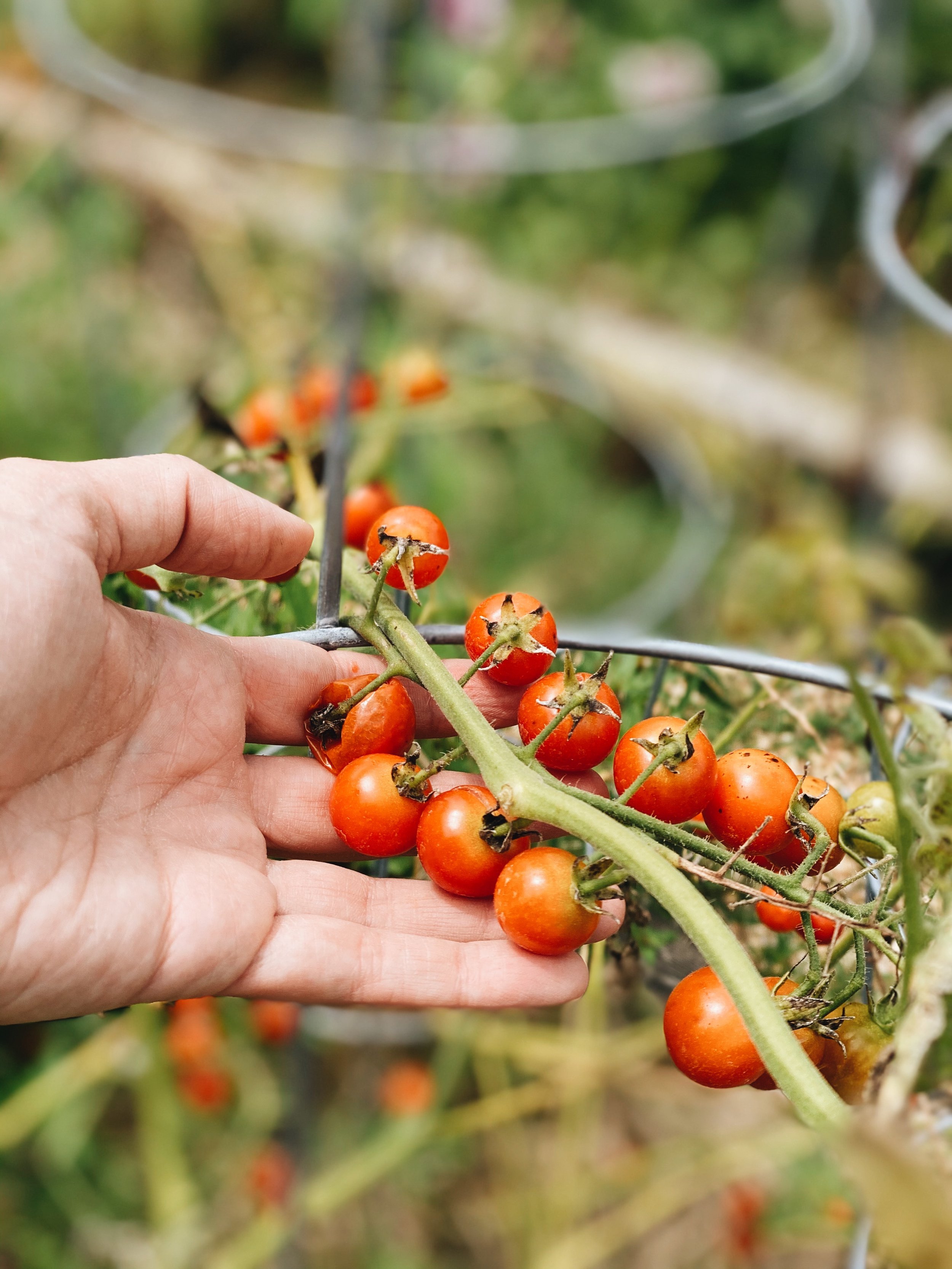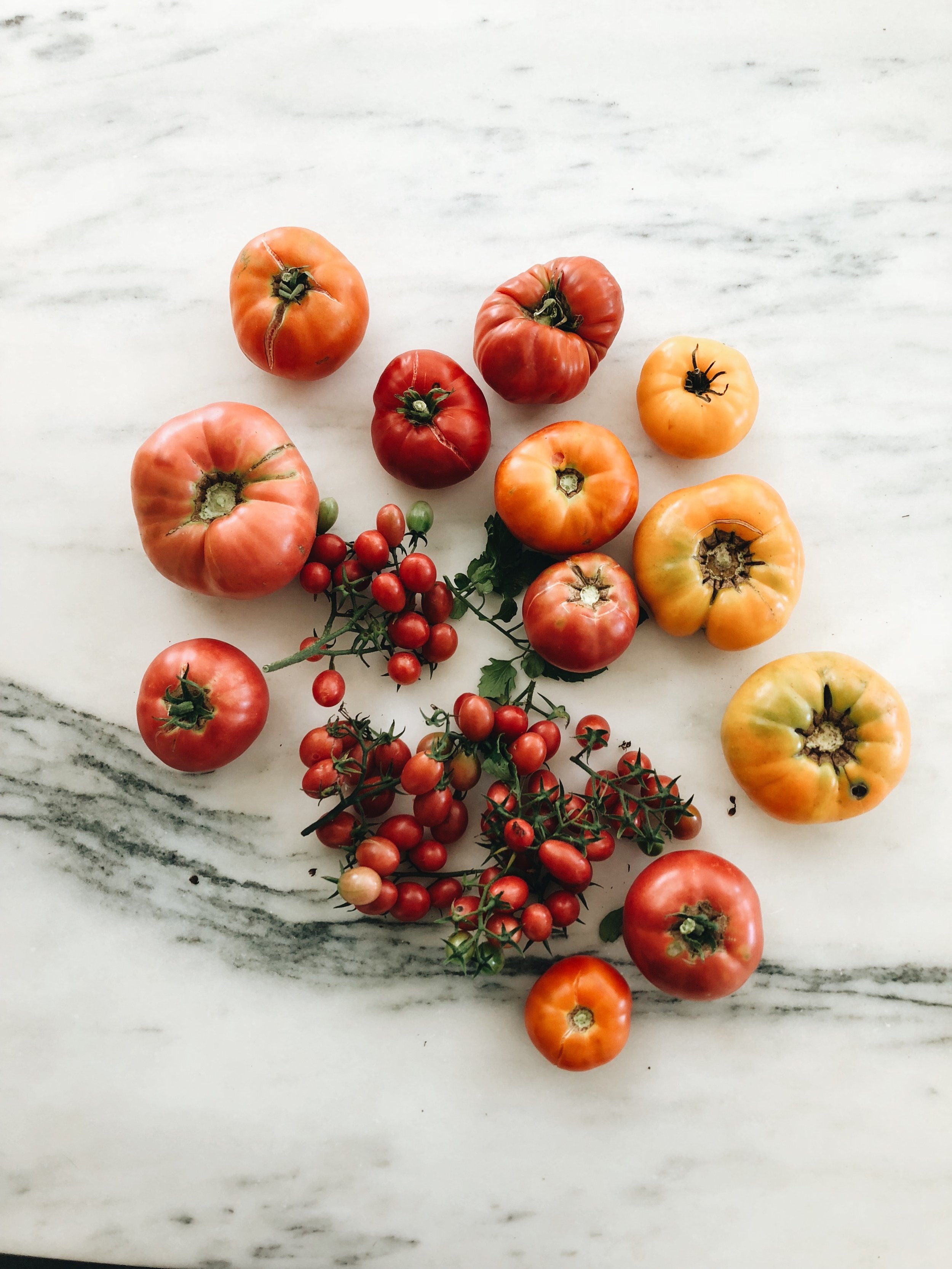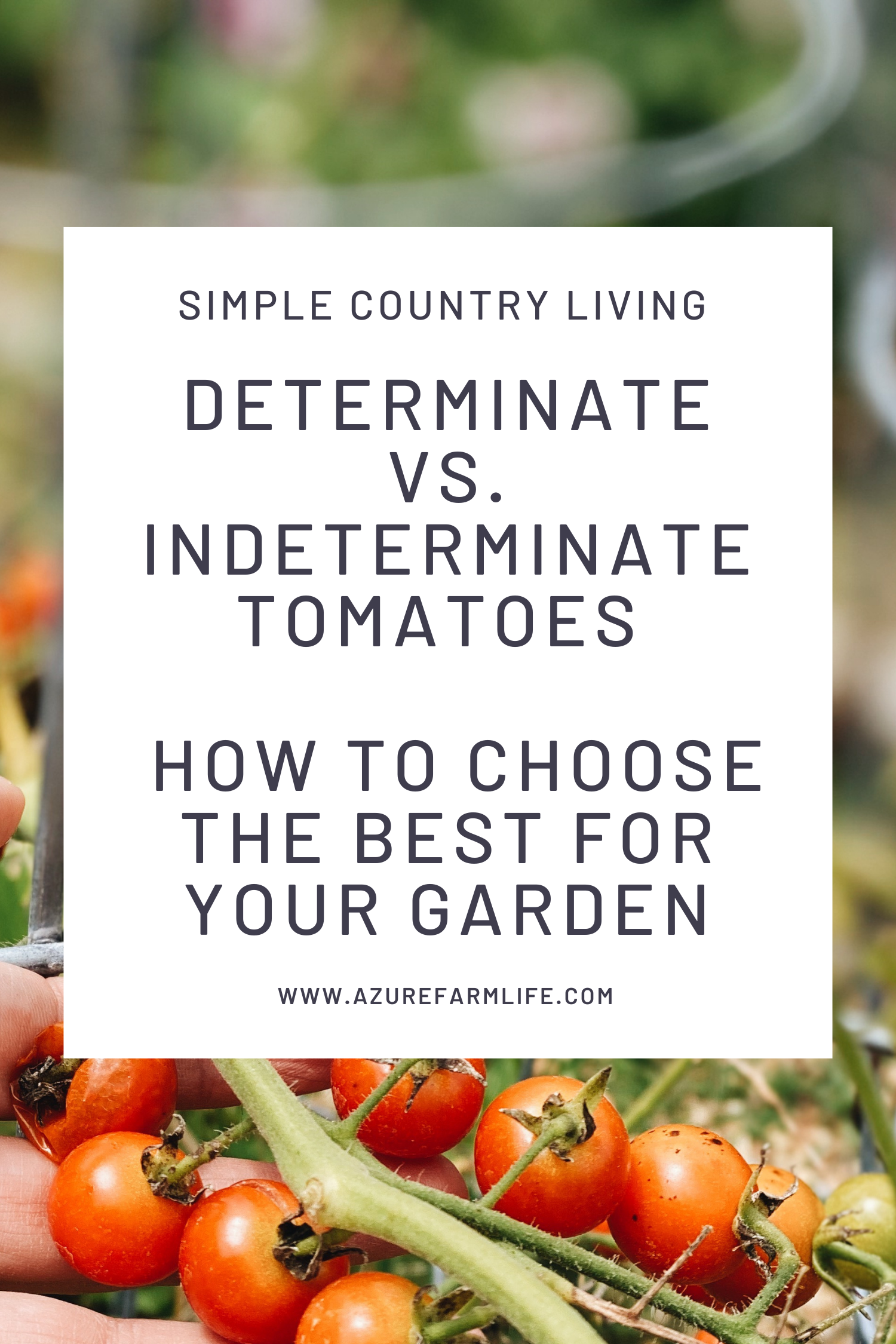Determinate Vs. Indeterminate Tomatoes - How To Choose The Best Type For Your Garden
I often get asked what the difference is between determinate vs. indeterminate tomatoes and which is better or easier to grow.
Can they be grown together? Also, which is better when you want to eat them fresh or can them?
Firstly I want to assure you that both kinds are lovely to have in your garden and both have a purpose and place in the garden.
Secondly, both determinate and indeterminate tomatoes have amazing flavors and can be enjoyed fresh, canned, preserved, and dried.
Lastly, they can be grown together, and both are relatively easy to grow.
What does matter is WHERE you want to grow them and WHEN you want to enjoy the harvest.
Continue reading to discover the differences between determinate vs. indeterminate tomatoes, how to choose which is best for your garden, and a list of indeterminate and determinate tomatoes.
TABLE OF CONTENTS
Determinate vs. Indeterminate Tomatoes - Differences in growth, size, when they set fruit, and support needed
Determinate Vs. Indeterminate Tomatoes
The most significant differences between determinate and indeterminate tomatoes are how they grow and when they produce their tomatoes.
Differences between the growth and sizes
Determinate tomatoes are smaller and grow like a bush. They usually grow up to five feet tall, so they are perfect for a small garden or container gardening.
Indeterminate tomatoes have a more vine-like structure and can grow up to 8-10 feet tall. The plant's main stem will continue to grow for as long as it is healthy and happy. You may even have seen tomato vines of 10-15 feet long!
Differences in when they set fruit
Determinate tomatoes will produce a large crop for a month or two, and then their productivity slows way down. So you will have a harvest only for a short time. The fruits form on the end of the branches and are usually denser than indeterminate plants.
But just because determinate tomatoes have a short fruit-bearing period doesn't mean your harvest has to end. You can plant a selection of early, mid-season, and late-season tomato varieties for a continual harvest throughout summer.
Indeterminate tomatoes do not have a limited period. They will produce tomatoes throughout summer until the first fall frost if they stay healthy. Growth will be stopped by cold weather or diseases. The fruits on indeterminate plants are spaced farther apart than on determinate plants.
Semi-determinate tomato plants are a third type that you may encounter. The characteristics of a semi-determinate plant are a mix of determinate and indeterminate.
This type of tomato plant is less tall than indeterminate type tomatoes but not as compact as determinate types. It can also produce fruit throughout the whole season but will be less productive than an indeterminate type towards fall. This type can work well in a small garden.
Differences in Trellis support and pruning
Determinate tomatoes are more manageable and require less maintenance -This may also be a deciding factor when choosing between the two varieties!
Due to their smaller size and short growing period, pruning sucker shoots is not recommended for determinate tomatoes. These will actually help increase yields, and you don't want to reduce the amount of potential healthy tomatoes.
Instead, you only want to prune some of the leafy stems at the bottom that can inhibit airflow and cause a humid environment that can cause diseases. If your plant becomes overcrowded during the season, you can remove some of the leafy shoots from the middle of the plant.
Determinate tomatoes have sturdy stems and don't usually require stakes to support them. However, some gardeners offer support like cages to support their heavy fruit load.
Indeterminate tomatoes need pruning to make more fruit and stay productive all season. They can also quickly sprawl all over your garden beds, making them more labor-intensive. Pruning is also good for airflow and preventing pests and diseases.
If you leave them unpruned, you can expect less fruit, and the tomatoes will be smaller in size. This is because the plant continuously grows new vines, so less energy is used to grow actual tomatoes.
Pruning and tying up indeterminate tomato plants will be a continuous task throughout the season. Still, the reward is more tomatoes throughout summer, and they are usually more flavorful.
Intermediate tomatoes need tall, strong structures or trellises of at least 5 feet since they can throw out many shoots and become quite a big plant!
They are typically pruned to just one or two leader stems and trained to climb a trellis.
Which is Best for your garden? Determinate or Indeterminate Tomatoes?
We grow both styles of tomatoes here on the farm for two reasons:
1) Because, as you may know, I love canning
2) And I love a continuous supply of fresh tomatoes.
So let me explain.
Deciding which is the best for you to grow and your garden depends on what you will be using your tomatoes for.
Do you plan on using them for loads of canning and preserving? Or do you just want a continuous supply of fresh tomatoes to enjoy in salads and dishes? Or maybe, it's a combination of the two?
You will also need to consider the space you have to grow tomatoes. Do you have a large garden with many garden beds? Do you have raised beds? Or are you limited to a small patch of garden or containers?
Determinate tomatoes
These work wonderfully if you plan to do some mass canning or freeze large batches of salsa, tomato soup, or sauce. Having a lot of fresh tomatoes all at once will make this possible and easier.
A shorter productive lifespan also means that there will be space in the garden should you wish to plant other crops after your determinate tomatoes are done growing.
Determinate tomatoes are better suited for smaller gardens or containers as they don't grow as big.
If your space is limited, but you want a longer supply of tomatoes, just have another determinate tomato plant ready to replace the first one. You'll have another harvest in September!
Indeterminate tomatoes
These are perfect if you want to harvest a few tomatoes every week throughout summer. They won’t produce a large batch at one point, but will rather develop and bear fruit at different stages.
Cherry tomatoes and beefsteak tomato varieties are usually indeterminate, which are excellent for summer snacking and slicing.
Because of the growth patterns and size of indeterminate tomatoes, they are better suited to medium to large-sized garden beds (in-ground or raised).
Common Determinate and Indeterminate Tomato Varieties
There are 100's of tomato varieties to choose from, but these are some of the most common you will find:
Determinate Tomatoes list
Ace 55 – Perfectly round-shaped tomatoes that are small to medium in size.
Amelia - This variety thrives in very hot climates.
Better Bush - This everbearing variety produces high yields of large, very sweet fruit from late spring until frost, with concentrated fruiting in summer and again in fall.
Grape – Semi-determinate type between a cherry tomato and Roma tomato in features.
Roma – Small meaty tomato commonly used for sauces, canning, and making tomato paste.
Rutgers – Another very round-shaped tomato that is versatile enough to use for any situation!
San Marzano – These are semi-determinate and similar to Roma tomatoes with great flavor.
Indeterminate Tomatoes list
Better Boy – a Midseason tomato that is found in many grocery stores. They adapt to a variety of conditions and produce fruit with a classic tomato flavor.
Beefsteak – Large, thickly fleshed fruits, one of the favorite tomato varieties for the home garden.
Champion – Medium-sized tomatoes that produce an early harvest until your first frost.
Cherry – Bite-sized tomatoes with a sweet flavor most commonly eaten whole. Most varieties are indeterminate.
Jetstar – Low acidity, crack-resistant tomato.
Early Girl – A medium-sized tomato known for its quick and earlier harvests.
Sungold – Similar to cherry tomatoes. Small in size, orange in color, and has a lovely flavor.
Types of tomatoes we love to grow!
Canning Tomatoes
• San Marzano- INDETERMINATE
• Martinos Roma - DETERMINATE
• Pink Fang- INDETERMINATE
• Amish Paste- INDETERMINATE
Heirloom
• Yellow Brandywine- INDETERMINATE
• Rutgers- INDETERMINATE
Small Varieties
• Rosella- DETERMINATE
• Brad’s Atomic Grape- INDETERMINATE
• Yellow Pear- INDETERMINATE
• Black Cherry- INDETERMINATE
We have a ton of tomato plants in our garden, I may seem a bit obsessed, lol! But I love all the varieties we have and that I am able to have a long supply of tomatoes. And when you can as much as I do, you’ll understand :-)
What makes all these varieties and types so great is the fact that there is something for every gardener and garden type. I love that!
A few other helpful posts for you:
The best summer season vegetables that love the heat
How to can food in 10 easy steps with a beginner’s recipe
Love, Annette
PIN FOR LATER
homegrown community
Want to learn more about growing the juiciest, healthiest tomatoes yet? Then our HomeGrown platform may just be what you need!
There’s nothing like the excitement of learning a new thing - how to garden, how to make delicious recipes from your garden, or how to care for baby chicks.
But the truth is that without understanding the basics, these fun experiences can become a headache. Bugs eat your tomatoes before you do. Recipes don’t taste like you hoped. Those chicks get sick or worse, don’t make it.
We have been creating and curating content from people just like you who have already lived and learned, and we are excited to share with you the steps we took to find success so you don’t have to repeat the same mistakes we have made.
From food to farm to family and so much more, we find ways to share tried and tested ideas in your own kitchen, garden, farm, and home.
A growing library of over 100 videos
Watch and enjoy on any device
Connect with a community of lifelong learners
Access to on-demand workshops and step-by-step tutorials
Fun Instruction for Rookies or Rockstars
Curated courses & world-class instruction
Affordable subscriptions with no surprise extra costs
Special subscriber offers & personal support for your country living questions
HomeGrown is here to not just teach you what to do but how to do it too. Oh…and we have some fun along the way.
For a small fee of $5.99/month or $49 for the year, you have years of experience, trial and error, and knowledge right at your fingertips.












